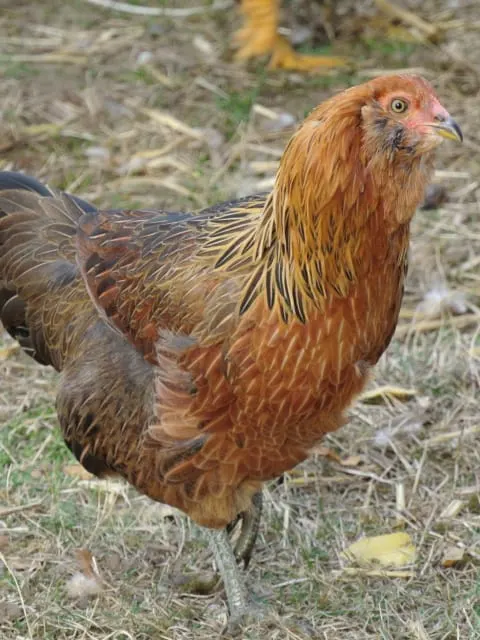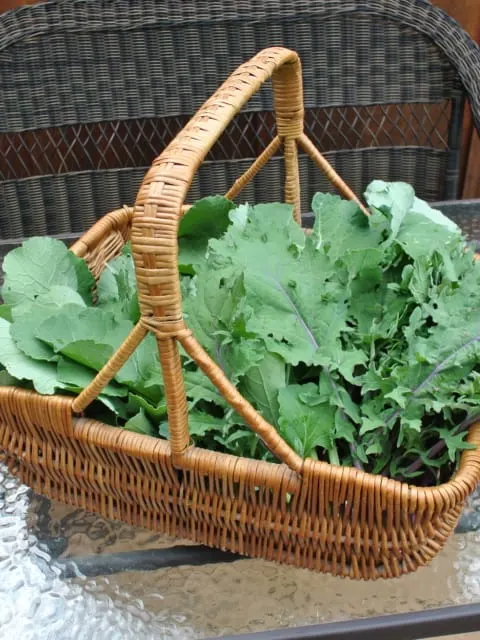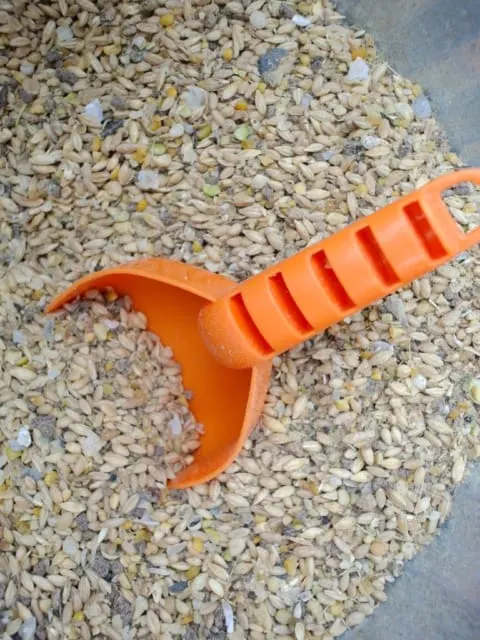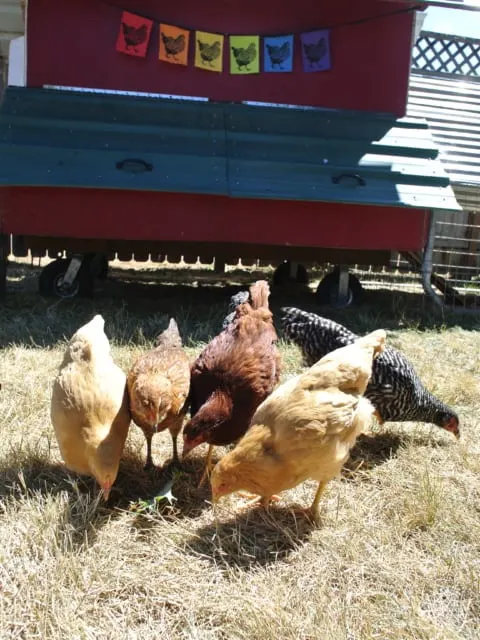Increase food security with backyard chickens!
Chickens are probably the easiest, most affordable, and most accessible livestock for a small urban farm, homestead, or backyard. They produce eggs and meat with relatively little space, time investment, or cost.
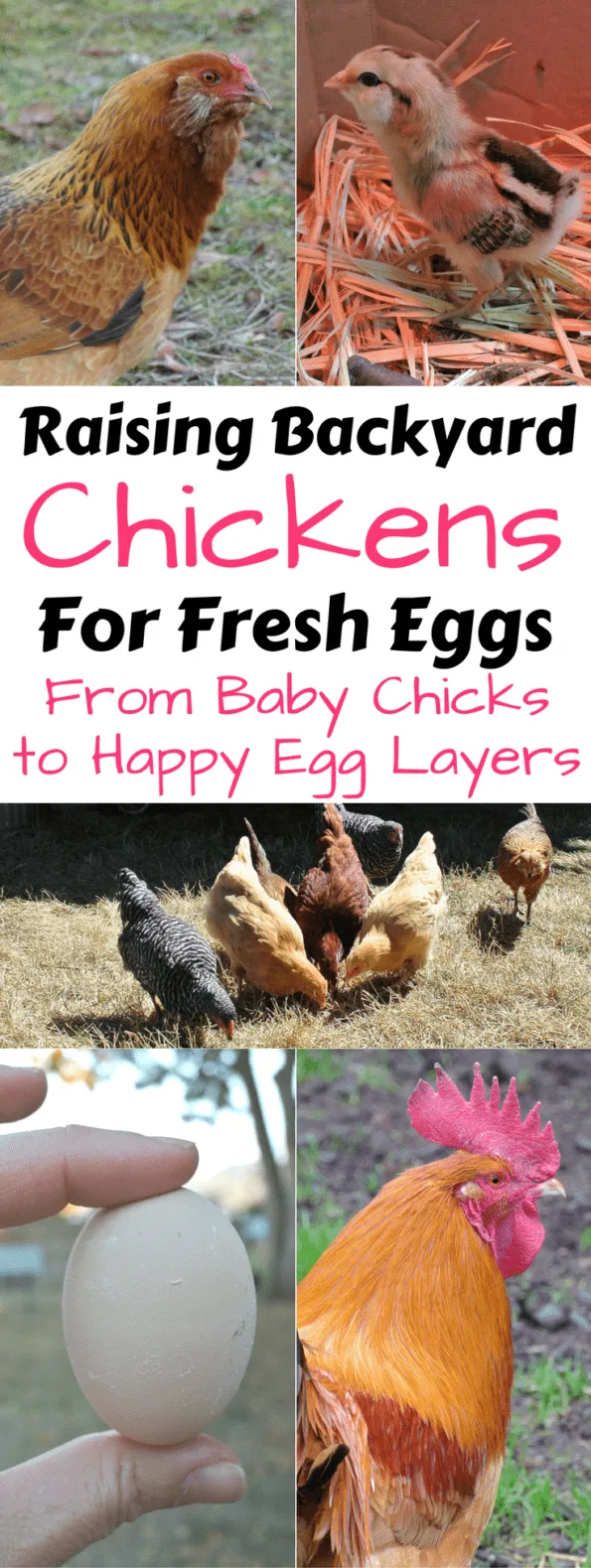
Keeping chickens only requires about 10 to 15 minutes of direct attention each day. This is enough time to feed and water your flock, check for any health issues, socialize with them, collect eggs, and give them treats. It is a minimal time investment with a wonderful return.
Additionally, chickens are family-friendly! Most breeds should be handled often and are very safe around children. My daughter, with supervision, was picking up our hens before her second birthday.
Keeping Roosters
Roosters can become aggressive. If you decide to keep a rooster with your flock it is best to watch his temperament carefully — especially if you have children. Roosters can help you protect a free-ranging flock and make nice lawn ornaments with their bright colors and flashy feathers.
Not all neighbors appreciate waking up to the crowing of a cocky rooster. To avoid any potential issues with neighbors always check your local city or county regulations for keeping livestock. Additionally, discussing your desires to keep chickens and roosters with your neighbors beforehand can go a long way to mitigating potential problems.
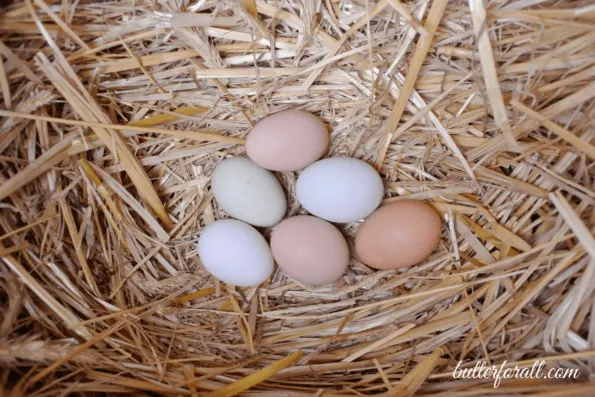
Resources for Raising Chickens
If you are new to keeping chickens, the first thing I would recommend is finding a few great books that will cover all the bases of raising chickens.
Books like these will cover common chicken issues and give you an excellent foundation for chicken keeping. The books you select will be a handy resource when you have a question about your birds.
Your public library will often have several books on chicken keeping.
Here are a few that I recommend:
Online forums are also wonderful places to gather information.
Facebook has a ton of chicken and homesteading groups!
Getting Ready for Chicks
You will need some special equipment if you plan on raising chicks. But, it’s so worth it because you will be on cuteness overload for the first several weeks.
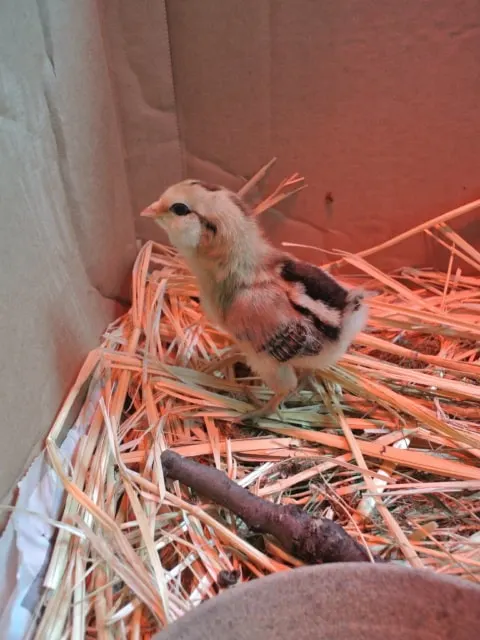
What you’ll need for chicks:
1. Brooder
A brooder is a safe place to raise your chicks until they are old enough to live outside without heat.
We used a large, cardboard watermelon box with great success — and it was free from the market!
Some people use brooder boxes, large plastic containers, or galvanized water tubs.
Chicks will need to be kept in a brooder for 5 to 6 weeks. But when they have most of their new feathers (2 to 3 weeks) and the weather is warm and mild you can put them out in a safe enclosed area for an hour or two, before going back in the brooder for the night. Make sure to continue to provide food and water when outside.
2. Source of Heat
This is essential for baby chicks who need to be kept warm.
Heat lamps are often used but they can be a dangerous fire hazard if they are not secured properly, and they are also very bright at night.
If you choose to use a heat lamp, get a good quality lamp with a porcelain socket and use a ceramic infrared heat bulb. I’m using this style now, and I love how warm it is without any light output!
There are also radiant heat brooders. The advantages of radiant heat brooders are that the chicks can move in and out of the heat as they need to, they uses less energy, and they’re much safer.
3. Chick Feeder
I like this style because it will fit on any of my regular-mouth canning jars. If you’re like me, then you have plenty of those around.
4. Chick Waterer
Same as above, this style fits on a regular-mouth canning jar.
5. Chick Feed and Chick Grit
There are medicated and non-medicated options on the market.
I choose the organic, non-medicated feed because I am raising organic hens for eggs.
Small scale urban chicken flocks rarely need medication but it’s wise to do a bit of reading on this issue and decide for yourself.
Starter feed should be used for the first 8 weeks.
Chick grit provides the chicks with enough roughage and hard materials to help them break down and digest their food.
6. Bedding
I used organic rye straw with some dried grasses and branches for my chicks and they seemed to love pecking around in it, and it seemed to help them develop balance.
There are other great options like kiln-dried wood shavings or sand.
Never use newspaper alone. Newspaper is slippery to young birds and can hinder proper leg development.
7. The Chicks
You probably have a local feed store that carries chicks in early spring and maybe again in the fall.
I got my chicks in the spring and moved them outside by mid-summer. The benefit to spring chicks is they won’t need any additional heat once moving outside.
A benefit to getting chicks in the fall is they spend the coldest part of the year indoors, and when they do move outside they get more time during the warmer months to jump-start egg laying.
If you don’t have a local feed store there are online companies that sell chicks, or you can try to connect with other homesteaders in your area and buy some chicks directly from them. I’ve found a wonderful and helpful community of homesteaders in my area on Facebook. Try searching for homesteading groups in your local area.
Choosing Breeds
There are many breeds of chickens to choose from.
Some are better layers than others. Typically, my birds lay eggs 6 out of 7 days of the week during the spring and summer months. This will most likely slow to about half that production during the winter months.
There are also a lot of “dual-purpose breeds,” meaning they lay eggs and are also considered good for raising as meat birds. There are a few strictly meat breeds too, which are hybridized for rapid, heavy growth.
Getting Ready To Move Your Pullets (Young Feathered Chickens) Outside
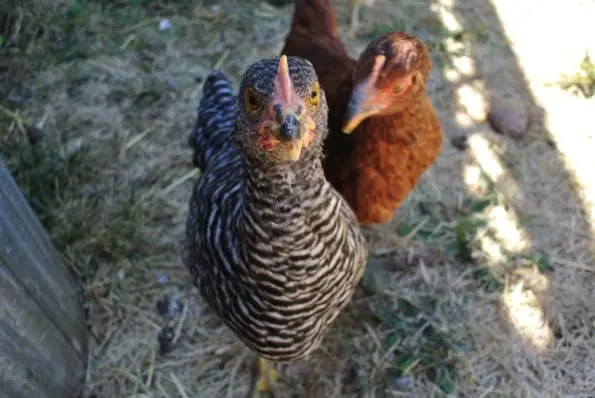
What you’ll need to move pullets outside:
1. A Coop and Run
Chicken coops come in all different shapes and sizes.
Small chicken tractors are a fun choice for small urban homesteads because they can be moved around easily, providing your girls with fresh ground every so often.
Coops usually come with nest boxes (where chickens will lay eggs) and roosts (where they will sleep).
If you can build one yourself or find someone in your area to make you a custom coop from scratch that would be the best-case scenario. You can ask the builder to make modifications that will suit you and your chickens’ needs.
There are plenty of plans and ideas online for a handy person!
Although I haven’t personally tried them, Amazon has some really cool-looking coops you can order online.
A cute coop for a small space:
Perfect for wet weather areas, this sturdy coop will never mold or mildew:
Tractor style coops are a great choice for small urban backyards:
A note on buying used or secondhand coops:
Before buying a used hen house, you should do a thorough inspection of all nooks and crannies to make sure that the structure is free from mites, lice, and other pests.
Unfortunately, chicken mites are capable of living for months inside coops, even after the chickens have moved out. Make sure to do your research and talk to the seller before buying a used coop!
2. Chicken Feed
Young birds will need grower feed from 8 to 18 weeks.
After 18 weeks they will need layer feed.
Oyster shells are full of calcium and help chickens form strong eggshells.
I love Scratch And Peck Feeds because this brand is organic, non-GMO, corn- and soy-free, local to the Pacific Northwest, and has oyster shells already added. It also soaks and ferments perfectly, increasing yield and nutrition.
3. Feed Storage
I use a small galvanized trash can for storing chicken feed. This is important because you don’t want pests getting into your feed.
In most cases I stay away from plastic because it is easily chewed on by rats, raccoons, opossums, and squirrels. You don’t want to tempt any of these guys to your chickens.
4. Bedding
I love straw and wood shavings because they are easy to use, and when they become soiled I can remove the bedding, age it, and then use it as fertilizer in my garden beds.
Sand:
I have heard great things about sand in the coop and in the chicken run. From what I’ve read, it wicks moisture away and keeps the floor dry. When used in the chicken run, it serves as a dust bath and helps break down any organic material.
5. Feeder and Waterer
Chickens aren’t that picky. My girls are happy when I just throw out their feed to them and they get to scratch. But I do keep a feeder for times when I won’t be there to attend them.
I use a shallow plastic dish for wetter fermented feed.
I also keep a variety of waterer options. The nipple style waterer is a great choice because the water stays clean and it holds a lot. Or you can use a more classic style of waterer.
6. Ceramic Eggs
I used ceramic eggs to train my chickens to use the nest boxes.
This is helpful for free-ranging birds, because you don’t want your chickens developing bad habits of laying elsewhere around your property. Unless of course you want an Easter egg hunt every day of the year!
To use ceramic eggs just add them to the nest boxes at about 22 weeks of age. Remove them when the birds have all laid several eggs in the nest boxes successfully.
 When To Expect Your First Eggs
When To Expect Your First Eggs
Easily the most exciting day is the day you open the nest box and see a wonderful gift from your beautiful birds. Eggs will come in all shapes, sizes, and colors depending on the breed of chicken you choose.
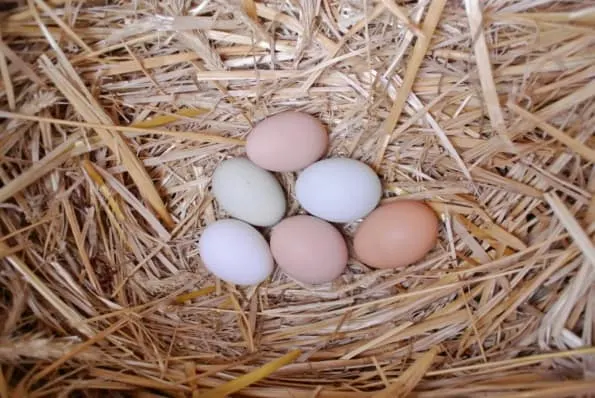
You can expect your first eggs around 23 to 25 weeks of age.
At first the eggs will be small and infrequent. Over time your lovely feathered ladies will be producing eggs for you daily.
Depending on health, breed, and care, chickens can live for 5 to 7 years or more. Note that egg production will start to slow down after 3 to 4 years and that that is a good time to add new chicks to your flock.
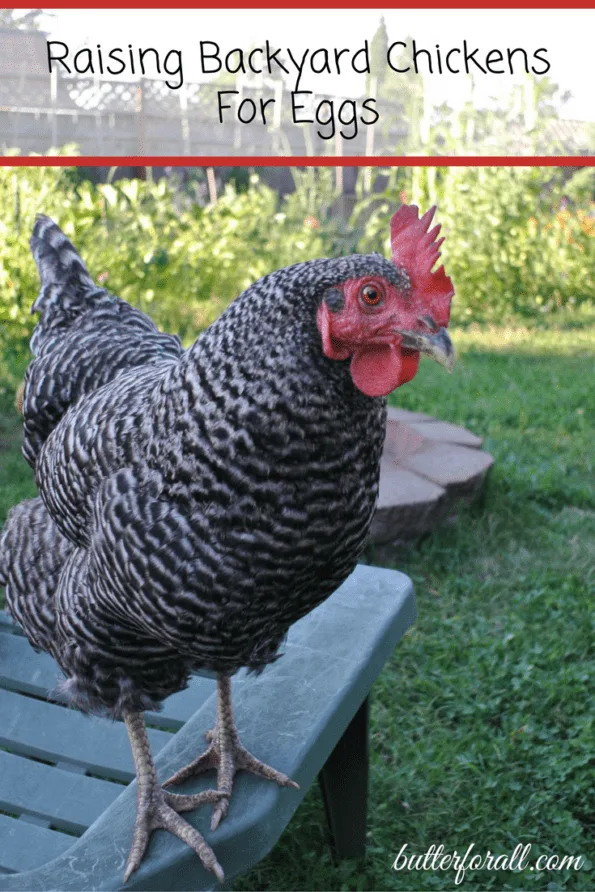
Sustainable Care for Your Chicken Friends
As I mentioned above, I feed my happy hens a grain blend that is organic, non-GMO, locally made, and corn- and soy-free.
I also soak and ferment this feed to boost nutrition, aid in digestibility, and increase yield. Keep scrolling for the recipe!
To me this is the most important aspect of raising chickens. I know I’m feeding them a wonderful varied diet and in turn my eggs are nutrient-dense, rich, and healthy.
Beyond the feed, they get lots of organic kitchen scraps and fruits, and I even grow extra kale to supplement their feeding.
There are also dried mealworms, grubs, herbs, and unique grain blends on the market for extra special treats.
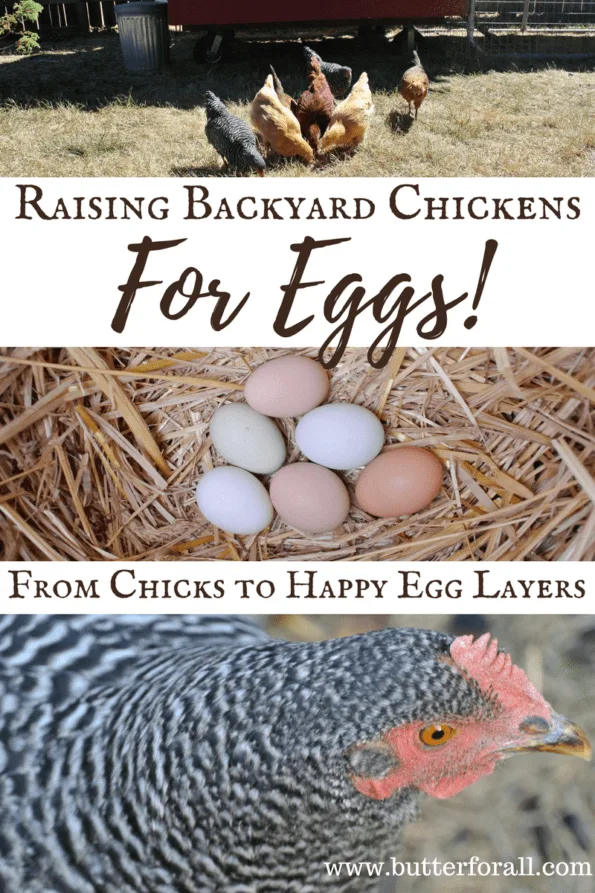
Recipes Using Lots of Eggs
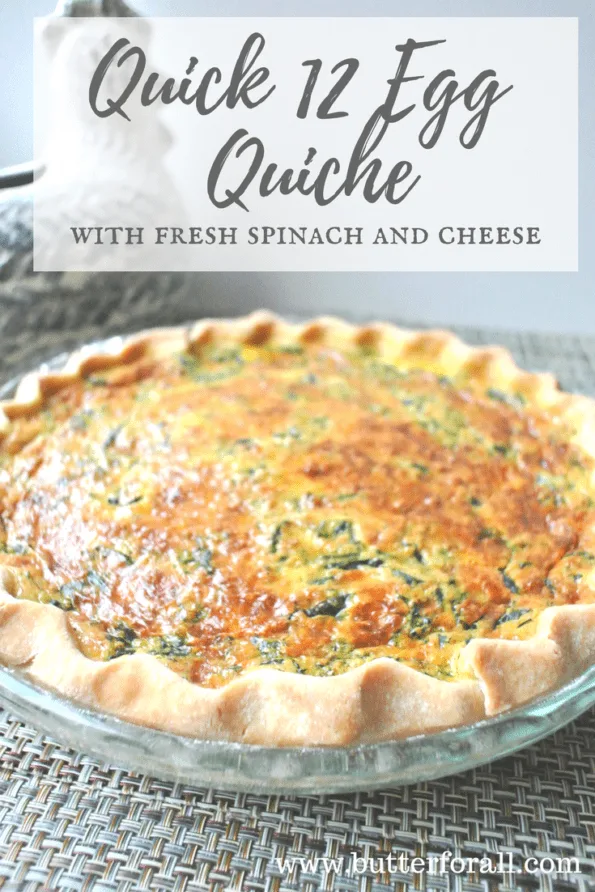

Soft and Sweet Sourdough Rich Dough
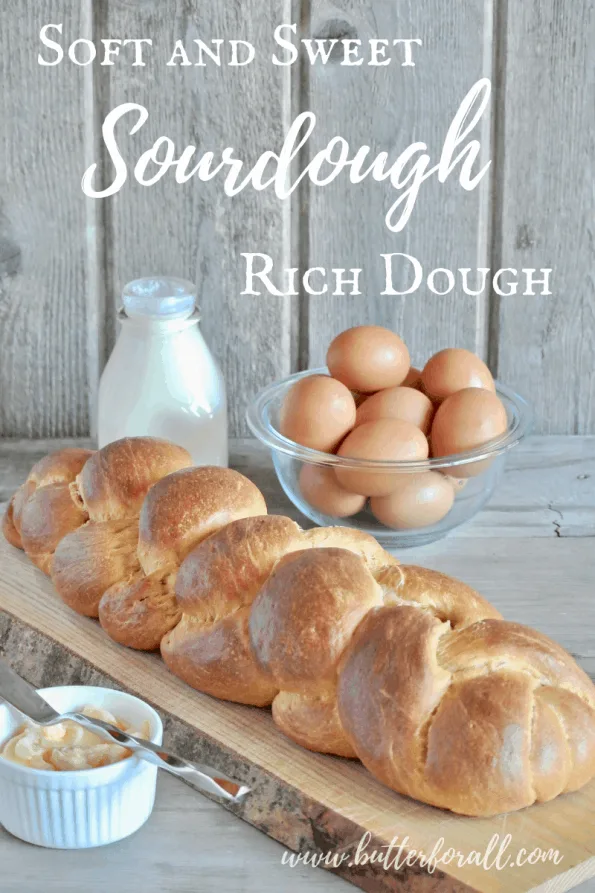
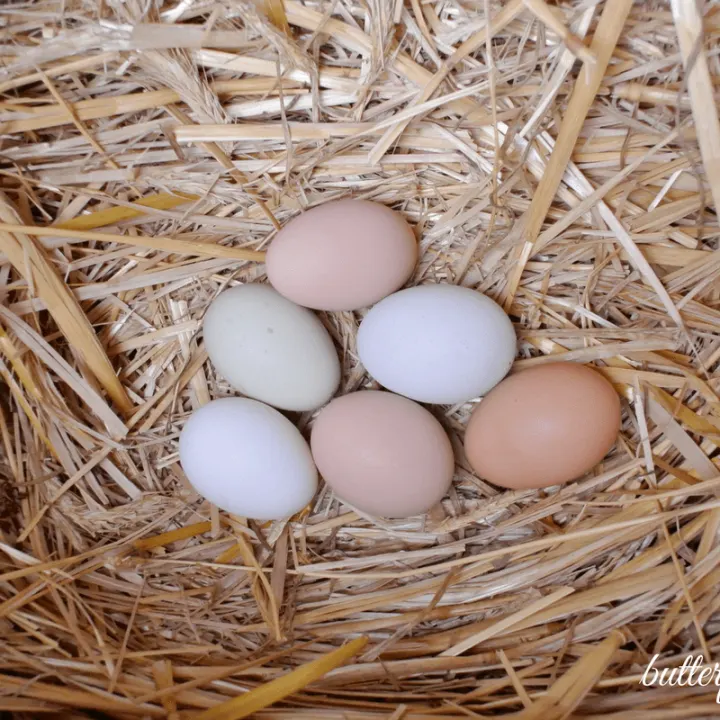
Soaked and Fermented Chicken Feed
This recipe makes 1/2 gallon of soaked chicken feed, perfect for feeding eight to 12 chickens daily.
Ingredients
- 1 gallon jar
- 2 quarts Scratch and Peck layer mix
- 2 to 3 quarts water
- 2 tablespoons whey from yogurt, kefir, or clabber milk
Instructions
- Fill the gallon jar halfway (2 quarts) with grain.
- Add enough water to saturate the grain and come up to the 3-quart mark.
- Add the whey and stir well.
- Screw on a loosely fitted lid and allow the mixture to ferment for 24 hours.
- Dump the soaked and fermented chicken feed into your chicken feeder, leaving a few tablespoons of grain behind in the jar.
- Add fresh feed and water. You do not need to add whey again. Ferment the batch for 24 hours and repeat these steps daily.
- After about a week, I like to clean my jar and start a fresh batch with fresh whey.




















